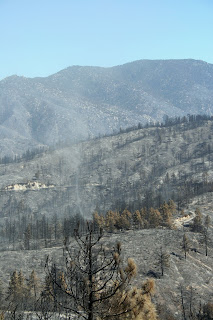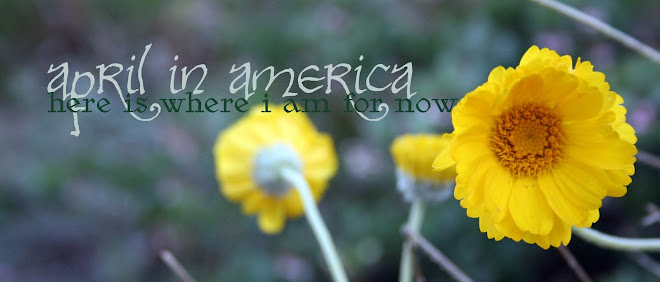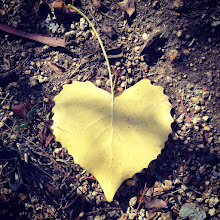skip to main |
skip to sidebar
I’m working on illustrative maps for a historic housing development near Los Angeles. It’s not artistically challenging: pretty much involves digitally tracing scans of the original as-built blueprints, and color coding plant material as specified by little numbers on the as-builts. I’ve learned a lot by tracing the work of a practically forgotten master landscape architect.
 The last set of drawings has changes scribbled all over, trees scratched out, new numbers hastily written without proper erasure, and it’s driving me crazy. Is that a 4 marked over a 9? Or a 9 marked over a 4? Or a 6 scribbled over a 5? I bet Fred Barlow Jr. never expected his work to be on the National Register. I bet he never thought someone would be studying it in preparation for a restoration plan. I’ve nigh lost my vision and pulled out my hair trying to decipher some of the lines and material notations.
The last set of drawings has changes scribbled all over, trees scratched out, new numbers hastily written without proper erasure, and it’s driving me crazy. Is that a 4 marked over a 9? Or a 9 marked over a 4? Or a 6 scribbled over a 5? I bet Fred Barlow Jr. never expected his work to be on the National Register. I bet he never thought someone would be studying it in preparation for a restoration plan. I’ve nigh lost my vision and pulled out my hair trying to decipher some of the lines and material notations.
I don’t expect to design permanent, lasting gardens at this phase of my career. I hope to be a master designer someday, and to be an expert plantswoman. Some of Barlow’s favorite plants are invasive here in Southern California, so even he didn’t necessary make perfect plant material choices in this landmark design. But by golly, I’ve learned a lesson here: write legibly in the final drawing. Erase things completely. Correct the key. And for that measure, place the key on the plan, because this one has been lost.
Sometimes life is like removing Spanish Broom,.
Spanish Broom (Sparteum junceum) is an invasive plant that poses serious threat to ecosystem health--it's toxic (nothing eats it and it crowds out good forage for birds and animals), it's flammable (old growth is dry and thatchy, and it grows like crazy), and although it has pretty flowers for a month or so, it makes 10,000 seeds that are almost all viable for 80 years. It also has deep, woody roots that are a pain to dig out, but have to be dug up--otherwise it resprouts. To the un-knowing, they may look pretty and like a good thing, but to the trained eye they spell disaster.
So, we dig them up, wreaking no small havoc to do so. Sometimes the landscape looks worse the day after we dig up the broom plants: small craters, dislodged boulders, and we're pretty filthy too. A short time later though, the damage is erased.: the plants that belong there have begun to re-establish a healthy community, covering the areas left bare by broom removal. The colors, textures, and variety that belongs there is back. The landscape is the way it should have been.
Be as wise as a serpent, and as innocent as a dove.
Do not trade what you really want for what you merely want at the moment.
Lean not on your own understanding...
I hate making decisions. I also hate it when people make them for me. ;-) When they seem to just be serendipitous, then i'm okay. Tomorrow i'll either have to make a decision: to accept or not to accept a job; or i'll find out that the decision doesn't exist because they don't like my salary request.I hate making decisions.This isn't a direct career choice. It fell in my lap, because a colleague told them i could do what they need done. I can--i'm qualified by experience, by training, by my knowledge of the terrain, working relationships with key players, and because i know how to learn whatever else i need to know. It's in the environmental field, but it isn't very creative. It would last about four years, and give me a foot into a good company or a good stepping-stone back into government work: that's a lot more than the temporary student positions i've been finding in my direct field. It's here in SoCal, so i don't have to leave my community (where i love walking to the coffee shop and bookstore) or my friends the way the government student jobs require. It would be more money than i have ever earned before--and benefits!!! (about time!!!). But will i be happy? I think so: i think, even if the work is a little tedious, i'll enjoy plotting invasive plant removal tactics. I'll enjoy being outside in my beautiful San Gabriels. I'll enjoy leading a crew of workers, and i even kinda get a sick pleasure out of organizing files, photos, and reports. I think i'll have enough energy left to complete landscape architecture projects on the side. The other concern is working enough LA hours to be able to take the licensing exam...but...well, i'll find out tomorrow if these concerns are moot!
 I've been thinking a lot lately about nature and survival of the fittest...thinking about it a lot from summer work, during summer work. (Hiking every day gives you lots of time to think). I work for people who believe in evolution, believe species arrive through evolution, not just micro change over time which everyone agrees occurs. And i've been thinking, if things evolve, if it's survival of the fittest, then why do we care if the weeds take over? Obviously they are more fit.I think people would say: well, the weeds are there because humans brought them. They were mixed in seeds brought by settlers or in grain shipments, or planted because someone missed them from home or thought they were pretty and imported them from some exotic place. And we should reverse the damage we've done. Nonetheless they are apparently the most fit, and if the native plants just can't make it in the competition, well, then, let the native plants go. The other things do better there.
I've been thinking a lot lately about nature and survival of the fittest...thinking about it a lot from summer work, during summer work. (Hiking every day gives you lots of time to think). I work for people who believe in evolution, believe species arrive through evolution, not just micro change over time which everyone agrees occurs. And i've been thinking, if things evolve, if it's survival of the fittest, then why do we care if the weeds take over? Obviously they are more fit.I think people would say: well, the weeds are there because humans brought them. They were mixed in seeds brought by settlers or in grain shipments, or planted because someone missed them from home or thought they were pretty and imported them from some exotic place. And we should reverse the damage we've done. Nonetheless they are apparently the most fit, and if the native plants just can't make it in the competition, well, then, let the native plants go. The other things do better there.
Really, it's not any different from social darwinism, and saying that people who are infirm or week or mentally incapacitated shouldn't be propped up by society or individual kindnesses. Hitler and other eugenicists simply took that idea a little further and deliberately weeded them out. In both case, if they--plants or people--can't survive without assistance from the rest of us, why prop them up?
Thing is, i don't believe that. I don't believe that theory; i think there is evidence of a plan, and a planner. As Mr. Roger's sang, "Everything grows together because we're all one piece," but instead of it being my hands and eyes and legs, it's the water i drink, the air i breathe, the soil in which my food grows, and the habitat for animals and insects around that eat decayed things and pollinate plants. The planner just so happened to think of everything, every detail, every nuance. Everything works together. If we damage one piece, we damage everything else.
That's why i am a naturalist. Not because i think nature is more important than people, not because i think the planet is going to last forever, but out of respect for the planner.
birding life list (in process!)
- White-crowned Sparrow (Zonotrichia ?) in winter
- Western Wood-Pewee (Contopu sordidulus)
- Western Tanager (Piranga ludoviciana)
- Western Scrub Jay (Aphelocoma californica)
- Western Bluebird (Sialia mexicana)
- Tufted Titmouse (Baeolophus bicolor)
- Stellar's Jay (Cyanocitta stelleri)
- Sparkling Violetear (Colibri coruscans)
- Snowy Owl (Nyctea scandiaca)
- Snowy Egret (Egretta thula)
- Ruddy Duck (Oxyura jamaicensis)
- Red-winged Blackbird (Agelaius phoeniceus)
- Red-tailed Hawk (Buteo jamaicensis)
- Pied Crow (Corvus albus)
- Northern Mockingbird (Mimus polyglottos)
- Northern Cardinal (Cardinalis cardinalis)
- Mourning Dove (Zenaida macroura)
- Mallard (Anas platyrhynochos)
- male Superb Sunbird (Cinnyris superbus) i think
- Malachite Kingfisher (Alcedo cristata)
- Lesser Goldfinch, greenbacked (Carduelis psaltria)
- Lazuli Bunting (Passerina amoena)
- Indigo Bunting (Passerina cyanea)
- House Finch (Carpodacus mexicanus)
- Hooded Oriole (Icterus cucullatus nelsoni)
- Greater Roadrunner (Geococcyx califorianus)
- Great Horned Owl (Bubo virginianus)
- Great Blue Heron (Ardea herodias)
- Congo African Grey (Psittacus erithacus erithacus)
- Common Garden Bulbul (Pychonotus barbatus)
- Cinnamon Teal (Anas cyanoptera)
- Cattle Egret (Bubulcus ibis)
- Canada Goose (Branta canadensis)
- California Towhee, juvenile (Pipilo crissalis)
- California Thrasher (Toxostoma redivivum)
- Brown Pelican (Pelecanus occidentalis)
- Blue Jay (Cyanocitta cristata)
- Black-crowned Night-Heron (Nycticorax nycticorax)
- Black-capped Chickadee (Poecile atricapillus)
- Black Phoebe (Sayornis nigricans)
- Black Crowned Waxbill (Estralida nonnula)
- Bald Eagle (Haliaeetus leucocephalus)
- Anna's Hummingbird (Calypte anna)
- American Robin (Turdus migratorius)
- American Kestrel (Falco sparverius)
- American Goldfinch (Carduelis tristis)
- American Coot (Fulica americana)
- American Avocet (Recurvirostra americana)
- African Pygmy-Kingfisher (Ispidina picta)
- Acorn Woodpecker (Melanerpes formicivorus)
 The last set of drawings has changes scribbled all over, trees scratched out, new numbers hastily written without proper erasure, and it’s driving me crazy. Is that a 4 marked over a 9? Or a 9 marked over a 4? Or a 6 scribbled over a 5? I bet Fred Barlow Jr. never expected his work to be on the National Register. I bet he never thought someone would be studying it in preparation for a restoration plan. I’ve nigh lost my vision and pulled out my hair trying to decipher some of the lines and material notations.
The last set of drawings has changes scribbled all over, trees scratched out, new numbers hastily written without proper erasure, and it’s driving me crazy. Is that a 4 marked over a 9? Or a 9 marked over a 4? Or a 6 scribbled over a 5? I bet Fred Barlow Jr. never expected his work to be on the National Register. I bet he never thought someone would be studying it in preparation for a restoration plan. I’ve nigh lost my vision and pulled out my hair trying to decipher some of the lines and material notations.

